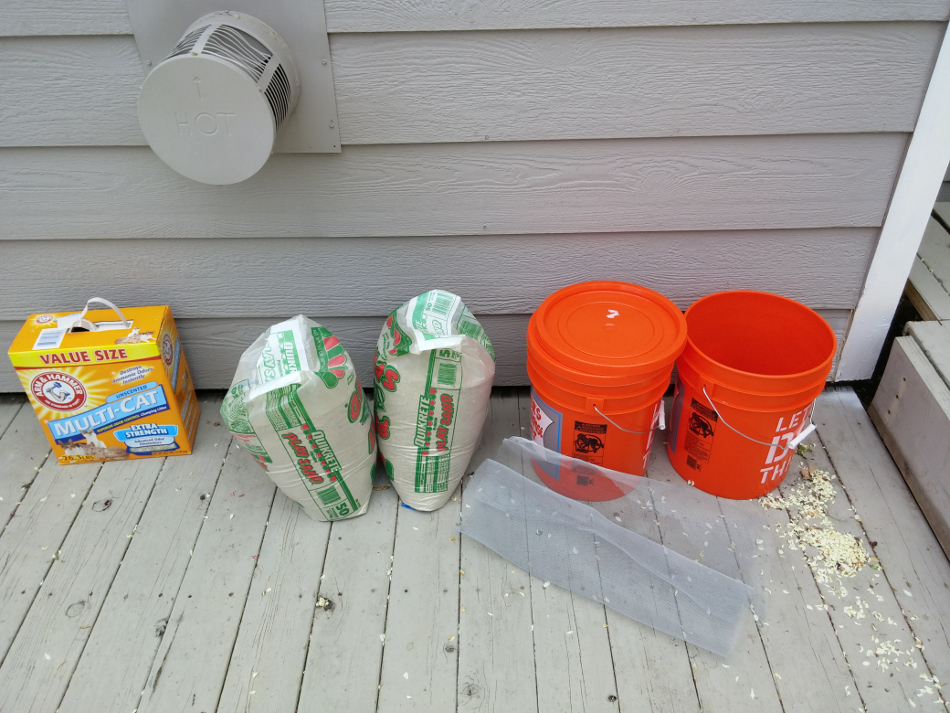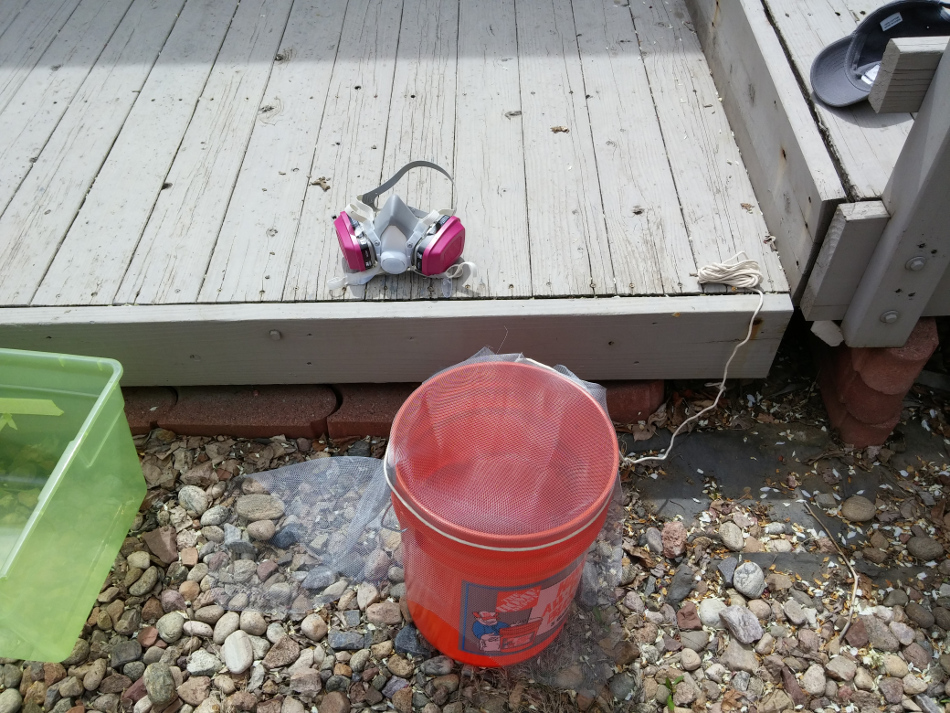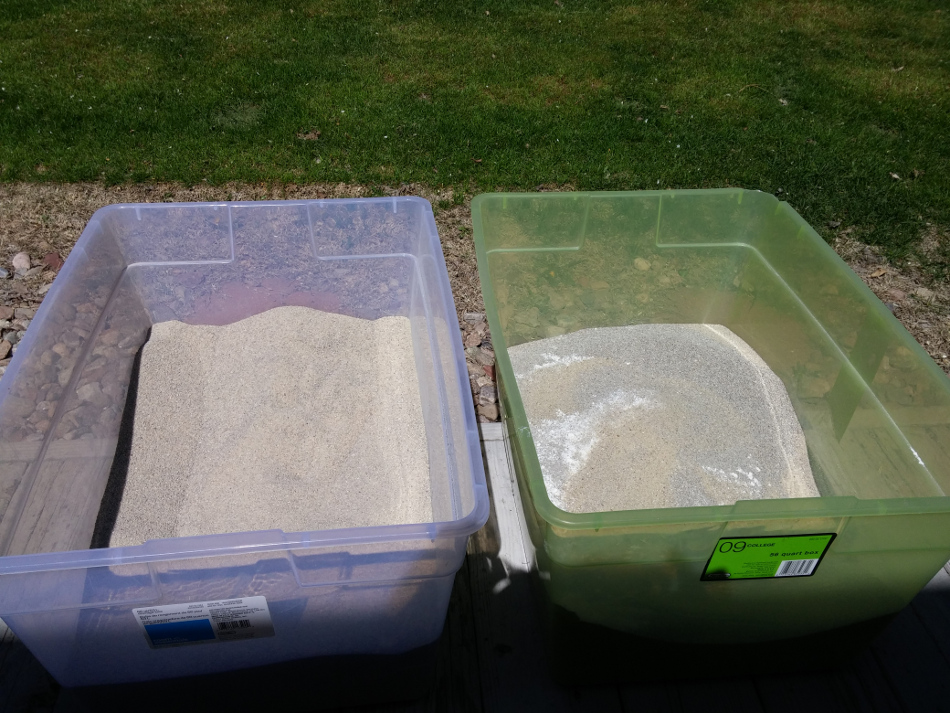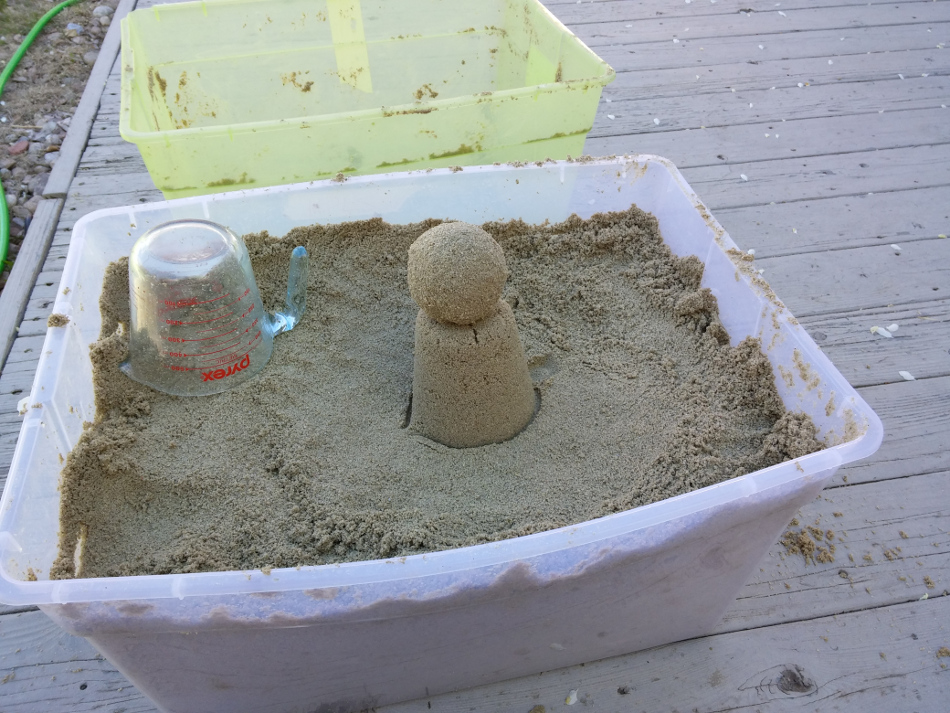This post is part of a series on making and using the Gingery Foundry.
We got a foot of snow last weekend which put a damper on my foundry project while I waited (impatiently) for the yard to melt. This weekend I was able to get back to work. The next step in putting together my foundry was to blend up some molding sand. This is a clay-bonded sand mixture designed to hold its shape when packed around a pattern. The synthetic sand recipe I used should ideally have the following proportions (by weight): 91.5% fine silica sand, 7.5% powdered bentonite clay, and 1% wheat flour.
The silica is the base for the sand. The sand is coated with powdered bentonite to make it stickier and provide better bonding characteristics. The flour boosts the water retention of the sand, making it a little more resilient and resistant to cracking. There are other additives that get added to professional-grade molding sand, but they’re beyond the scope of what I’m doing.
If you can find washed and sifted sand in the 65-85 mesh range, go ahead and use that. I wasn’t able to find any sand fine enough for my purposes, so I sifted all my sand through a piece of fine window screen (leftover from a previous project).
Bentonite clay is sold in powdered form online and in some ceramic supply stores. It’s also the primary ingredient in cat litter. I opted to use cat litter, because it was easy for me to get a hold of, but if I were doing this again I would bite the bullet and buy some powdered bentonite. The added effort of blending up cat litter, sifting out the powder, and mixing for what felt like days to get it to dissolve and coat my sand totally outweighed whatever the cost of clay would have been.
The flour component can be any absorbent flour. I used wheat flour, but I’ve heard that wood flour and cornstarch both work as well if not better.
I mixed all my ingredients dry, then added water bit by bit - mixing the sand and letting it rest in between additions. I wasn’t really sure what to expect here; I figured I’d get something like the damp sand you make sandcastles out of at the beach, but the molding sand is noticeably different. It has an almost mealy texture to it, sort of like brown sugar. As you stir it around, you can feel that it wants to clump up and pack together. The picture below was taken towards the end of the mixing and conditioning process.



